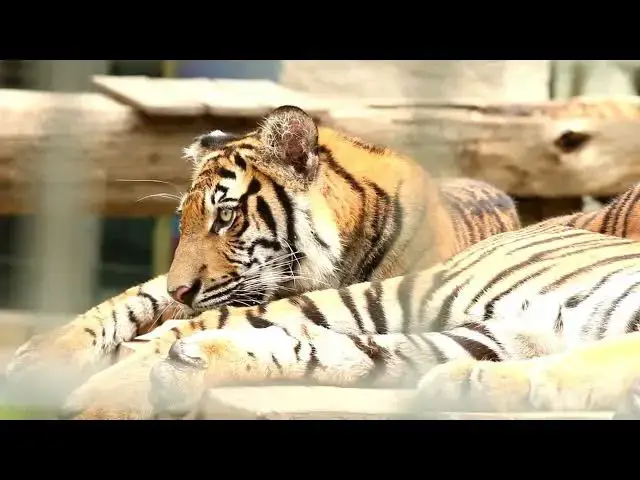Explore how tigers communicate threats through facial expressions, body postures, tail movements, and vocalizations. Learn why understanding these signals is important for tiger conservation and human safety in tiger habitats.
Show More Show Less View Video Transcript
0:00
tiger body language decoding threat
0:03
signals tigers are known for their power
0:05
and Grace but did you know they're also
0:09
masters of non-verbal
0:11
communication these magnificent big cats
0:15
have a complex system of body language
0:17
especially when it comes to signaling
0:20
threats understanding how Tigers
0:23
communicate through their body language
0:25
is crucial for their conservation and
0:27
for human safety in Tiger habit
0:31
Tigers use a combination of facial
0:34
expressions body postures tail movements
0:37
and vocalizations to convey threats to
0:40
potential rivals or
0:42
prey let's explore these signals in
0:45
detail facial expressions play a
0:47
significant role in Tiger threat
0:50
displays when a tiger feels threatened
0:53
or wants to intimidate it will often
0:55
bear its teeth pulling back its lips to
0:58
reveal its impressive canine
1:01
the eyes will widen and the ears will
1:04
flatten against the
1:05
head this intense facial expression is a
1:10
clear warning to back off body posture
1:14
is another key element of tiger threat
1:17
signals an aggressive tiger will make
1:20
itself appear larger by Standing Tall
1:23
arching its back and raising its
1:25
fur this posture known as pyo erection
1:30
makes the tiger look more imposing and
1:33
intimidating the tiger may also lower
1:36
its head and shoulders preparing to
1:38
pounce if
1:40
necessary tail movements are subtle yet
1:44
important indicators of a tiger's mood
1:48
when threatened or preparing to attack a
1:51
tiger's tail will become stiff and may
1:54
swish back and forth in sharp agitated
1:58
movements this is in contrast to the
2:00
relaxed gentle swaying of a calm tiger's
2:04
tail vocalizations often accompany these
2:08
visual
2:09
cues tigers are capable of producing a
2:12
variety of sounds but when threatening
2:15
they typically use low pitched growls
2:18
snars and
2:21
Roars these sounds serve to further
2:24
intimidate potential threats and can be
2:27
heard from considerable distances
2:30
it's important to note that these threat
2:32
signals are not always used in
2:34
isolation Tigers often combine multiple
2:38
signals to create a more powerful
2:40
message for example a tiger might bear
2:44
its teeth while growling and holding a
2:47
threatening posture leaving no doubt
2:49
about its
2:50
intentions Tigers use these threat
2:53
signals in various
2:56
contexts they may employ them to war off
2:59
rival Tigers encroaching on their
3:01
territory to intimidate potential prey
3:04
or to protect their cubs from perceived
3:08
dangers in some cases these displays are
3:11
used as a warning giving the Potential
3:14
Threat a chance to retreat before the
3:16
tiger resorts to physical
3:19
aggression understanding tiger body
3:21
language is crucial for several
3:24
reasons for researchers and
3:26
conservationists it provides valuable
3:29
insights into tiger behavior and social
3:33
dynamics for people living in or
3:35
visiting tiger habitats recognizing
3:38
these signals can be a matter of life
3:40
and death by respecting these warning
3:44
signs humans can avoid dangerous
3:46
confrontations with
3:48
tigers tigers use of body language to
3:52
Signal threats is a testament to their
3:54
complex communication system from subtle
3:58
tail movements to dramatic facial
4:01
expressions every aspect of a Tiger's
4:04
body can convey important
4:07
messages by studying and understanding
4:10
these signals we can better protect both
4:12
tigers and humans ensuring a safer
4:15
coexistence with these magnificent
4:17
creatures
#Pets & Animals
#Wildlife
#Biological Sciences
#Ecology & Environment

